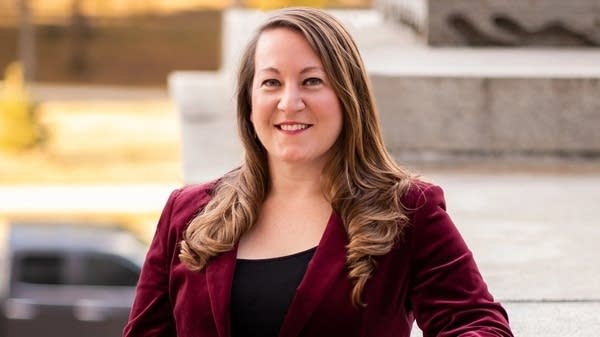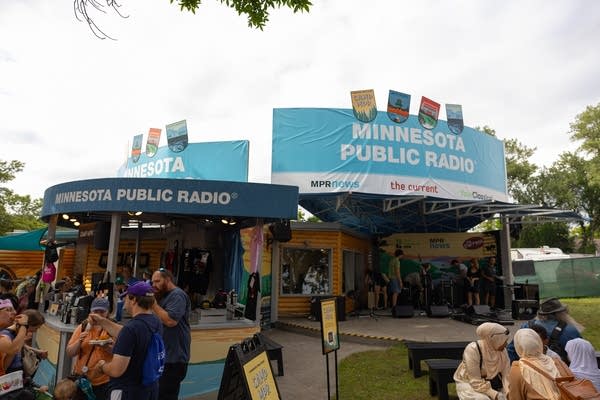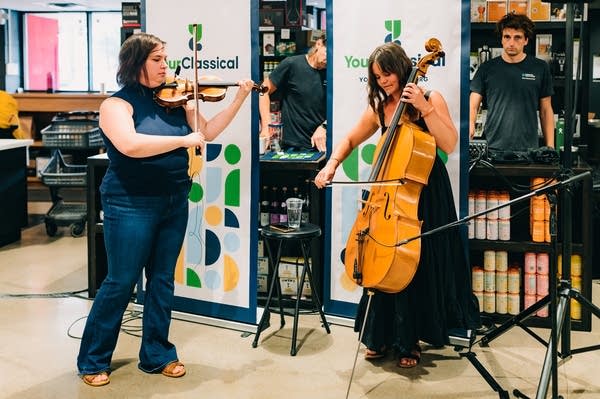La Grande Bande focuses primarily on Baroque music, using the instruments of the time. But the (non-musical) tone it wants to set in concerts is decidedly 21st-century.
"We want to have a little more chill atmosphere at our shows," soprano Catherine Sandstedt said.
Mission accomplished, or at least it should be at the ensemble's next show. The Nov. 1 "Casual Concert" will be held at an Arlington, Minn., restaurant, where patrons will be encouraged to eat, drink and even chat during the performance.
"In the program we will ask if [attendees] could just whisper so it won't interfere with other people in the audience," music and artistic director Michael Thomas Asmus said. "The whole idea is to make it an evening out with friends, and Baroque music is playing."
Of course, even though they are promoting a laid-back experience and will themselves be clad in jeans and polo shirts or button-down blouses, La Grande Bande artists are serious about being true to the music of earlier times.
"The more I researched [contemporary] early-music ensembles," Asmus said, "I kept seeing how they were trying not necessarily to reconstruct but to bring the music to the modern era. When you play on modern instruments, you're losing something."
So La Grande Bande includes "the instruments composers were writing for to get the tonal aspects of what was being written. It comes back to hearing [Johannes] Brahms played with gut strings, or using French horns that aren't quite modern."
Sometimes that might involve a leap of faith, built around learning as much as possible about concerts from bygone eras. With no recordings from the time of Johann Sebastian Bach or even Brahms, "in reality what we do is guesstimation," Asmus said.
"We're trying to sing in the manner of a Baroque or Romantic singer, trying to find what it would have felt like to perform then," he added. "It can be difficult because there's only so much evidence we have from that era."
The interpretation extends to what's on the sheets in front of the players. In the Baroque era, Asmus said, "the score was more of a tool than a prescriptive device. In modern music the score is gospel. A [certain] recording becomes the one way to perform the piece. That's not necessarily how they thought. We're trying to find the best ways to figure out how they would have done things."
If anyone is up to the task, it's Asmus. After all, the Gustavus Adolphus grad has managed to recruit a coterie of gifted musicians to an ensemble based in Gaylord, Minn. That would be in Sibley County, also home to the Nov. 1 concert site but 70 miles southwest of the Twin Cities on the way to pretty much nowhere (actually, Sioux Falls). He's finishing a doctorate in musical arts at the State University of New York at New Paltz, where Sandstedt also earned her master's.
At a September recital in Winthrop, Minn. — deemed "entertaining, warm and sensitive" in a Star Tribune review — Asmus played a William Dowd harpsichord, but obtaining period instruments can be dauntingly expensive, so the musicians sometimes use borrowed instruments. The goal is to use, for example, an oboe from back in the day, because it "opens up a completely different sonic world," Asmus said.
Capturing the atmosphere is less daunting in more ways than one. "Baroque music was more of an entertainment rather than an event to go to," he said. "For aristocrats, it was basically pop music. In Leipzig [Germany], cafes like Cafe Zimmermann brought in orchestras to get their customers to not only purchase coffee but to have a good time with their friends. People actually moved around, even during an opera."
So, what happened?
In the 19th century, Asmus said, "I think a lot of it was the composer becoming the object of focus rather than the music itself."
As musicians started donning formal wear and conductors became maestros, a "fourth wall" popped up between ensembles and audiences. That's the barrier La Grande Bande — which welcomes the Anglicized pronunciation "grand band" — is trying to break.
"The more that we uphold the music and composers, it's gotten rid of that flexibility and freedom people have to interact with each other or with the music," Asmus said. "Having an environment where musicians are relaxed and allowing them room to really breathe will help let the nervousness go and [they can] enjoy the music for the music. And just visually seeing us in jeans should help the audience realize we've chiseled away at that part of the wall."
The interaction starts with a free 3 p.m. open rehearsal at the Arlington Haus Too. La Grande Bande will perform selections from the evening's concert and discuss those pieces specifically, as well as Baroque music in general.
The 7 p.m. concert, second of the season for La Grande Bande and also at Arlington Haus Too, includes Bach's "Coffee Cantata," his Harpsichord Concerto in A, a love cantata by Giovanni Bononcini and a flute sonata by Telemann. English translations for the cantatas will be projected. Instruments will include baroque flute, harpsichord and the lute-like theorbo.
Tickets are $5 in advance (available here) and $7 at the door. Donations, which augment funding from a grant provided by the Prairie Lakes Regional Arts Council, are encouraged. Food and drinks will be available beginning at 6:30 pm and during the performance — part and parcel of the whole "Casual Concert" billing.
"We want to allow people to do some very sacrilegious things — talk, wear casual clothes, eat, move during the performances," Asmus said. "It's really just a huge experiment, but we think it will work well."
Editor's note: An earlier version of this article misidentified Cafe Zimmerman as Collegium Musicum and has been updated.
Love the music?
Show your support by making a gift to YourClassical.
Each day, we’re here for you with thoughtful streams that set the tone for your day – not to mention the stories and programs that inspire you to new discovery and help you explore the music you love.
YourClassical is available for free, because we are listener-supported public media. Take a moment to make your gift today.









